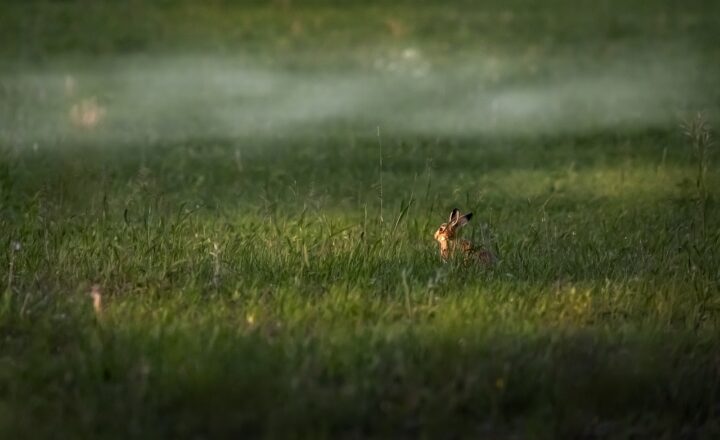Eagle Nesting Habits: How These Birds Build and Maintain Their Homes
November 13, 2024

Eagles are a symbol of strength, freedom, and majesty in the animal kingdom. These magnificent birds of prey are not only known for their exceptional hunting skills and keen eyesight but also for their impressive nesting habits. In this article, we will explore eagle nesting habits, including how these birds choose their nesting sites, the construction of their nests, the care of their young, and the unique adaptations they possess to thrive in their environments.
1. Choosing the Perfect Nesting Site
Eagles typically prefer nesting in large trees or high cliffs, as these locations offer protection from predators and other disturbances. The ideal nesting site provides an unobstructed view of the surrounding landscape, allowing the eagles to monitor their territory for potential threats and prey.
Factors Influencing Nest Site Selection:
- Height: Eagles usually build their nests at heights ranging from 30 to 100 feet. Higher nests offer better protection and visibility, while also minimizing the risk of ground predators reaching the young eaglets.
- Proximity to Water: Eagles thrive near bodies of water, such as lakes, rivers, and coastlines, where they can easily hunt for fish and other prey. Nesting near waterways ensures a reliable food source for both adult eagles and their chicks.
- Stable Structures: The nest must be anchored securely to withstand adverse weather conditions. Eagles often choose sturdy branches or cliffs that can endure windy conditions, ensuring their nesting site remains stable throughout the breeding season.
Eagles return to the same nesting sites year after year, adding new materials to their nests, which can grow to several feet in diameter and weigh hundreds of pounds.
2. Nest Construction: A Labor of Love
Eagle nests, also known as eyries, are expertly constructed with an array of materials that reflect the environmental conditions of their habitats.
Materials Used in Nest Building:
- Sticks and Branches: Eagles gather sticks, branches, and twigs from the surrounding environment to form the bulk of their nests. These materials are selected for strength and size to ensure the nest supports the weight of adult eagles and their young.
- Grass and Moss: To create a comfortable lining for their nests, eagles often incorporate grasses, moss, and other soft materials. This layer provides cushioning for the eggs and eaglets.
- Feathers and Fur: Eagles may also add feathers from their own bodies or the remains of prey, as well as fur from small mammals, to enhance the insulation and comfort of the nest.
The construction process usually begins well before breeding season, as eagles prepare their nesting sites in advance. They work together as a pair, with the male typically bringing materials while the female arranges them in the nest.
3. Egg Laying and Incubation
Once the nest is completed, the female eagle will lay between one to three eggs, depending on the species and environmental conditions. The eggs are usually laid within a few days of each other, and both parents participate in the incubation process, which lasts about 35 days.
Incubation Responsibilities:
- Sharing Duties: The male eagle often takes on the responsibility of hunting for food while the female remains with the eggs, ensuring they remain at the optimal temperature. They alternate roles, ensuring both parents are well-fed and capable of caring for their young once they hatch.
- Temperature Regulation: Eagles are highly attentive incubators, maintaining the eggs at a stable temperature. If temperatures drop during the night, both parents will work together to warm the eggs, ensuring the embryos develop successfully.
As the hatch date approaches, eaglets begin to pip through their eggs, and within a few days, the chicks will emerge in a vulnerable state, requiring immediate care from their parents.
4. Caring for the Young Eaglets
Once the eaglets hatch, they rely fully on their parents for food, warmth, and protection. Their care is critical for survival as they grow rapidly over the following weeks.
Care and Feeding:
- Feeding Schedule: Adult eagles will constantly hunt for food, typically providing the eaglets with small fish and mammals. Parents can consume food themselves and then regurgitate it to feed their young, allowing them to nourish the eaglets until they develop the skills to hunt independently.
- Fostering Independence: As the eaglets grow, parents become less involved in feeding, leading the youngsters to practice their hunting skills. The eaglets will often leave the nest, learning to glide and hunt until they are fully independent, usually around 10-12 weeks of age.
During this critical phase of development, eagle parents monitor their young closely, offering guidance and protection from potential threats.
5. Unique Adaptations for Nesting Success
Eagles possess several adaptations that enhance their ability to build and maintain their nests effectively, ensuring the survival of their species.
Adaptative Traits:
- Strong Talons: Eagles have sharp, powerful talons that enable them to grasp and manipulate large branches and materials as they construct their nests. These talons also assist in capturing prey, making them efficient hunters.
- Excellent Vision: An eagle’s keen eyesight allows them to spot suitable nesting sites from a great distance. With a field of vision that can exceed 180 degrees, eagles can identify potential threats while surveying their territory during nesting season.
- Social Cleanup and Maintenance Behavior: Eagles often maintain their nests through regular cleaning behavior. By removing debris or old materials that may harbor parasites, they contribute to a safe and sanitary environment for their young.
These adaptations highlight the years of evolution that have enabled eagles to thrive in various habitats across the globe.
Conclusion
Eagles are truly incredible creatures, showcasing remarkable nesting habits that ensure the survival and success of their young. From choosing the perfect site and constructing robust nests to caring for their eaglets with unwavering dedication, these birds exemplify the beauty of nature’s design. Understanding these nesting behaviors not only deepens our appreciation for eagles but also underscores the importance of protecting their habitats to ensure their continued success in the wild.
As we marvel at these magnificent birds soaring high in the skies, let us also advocate for their conservation, ensuring that future generations can witness the awe of eagles in their natural habitats.







